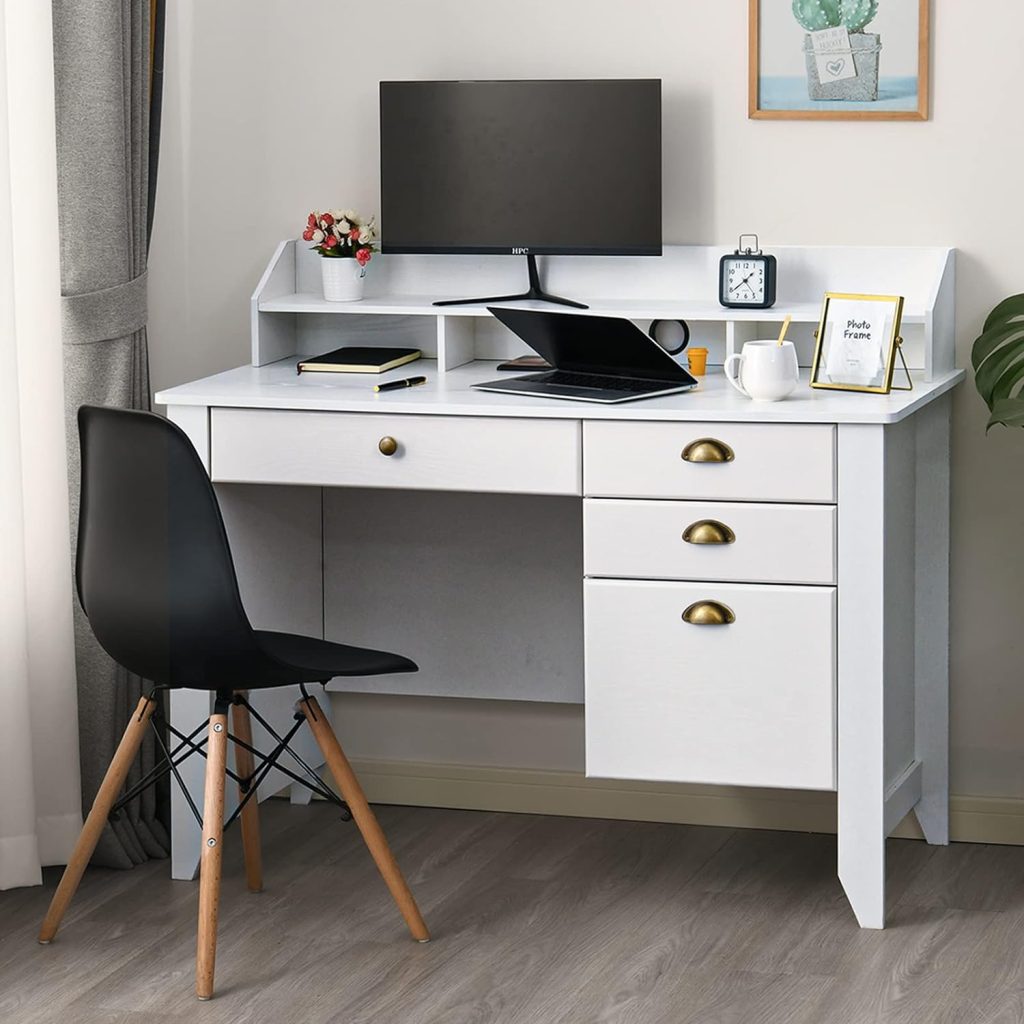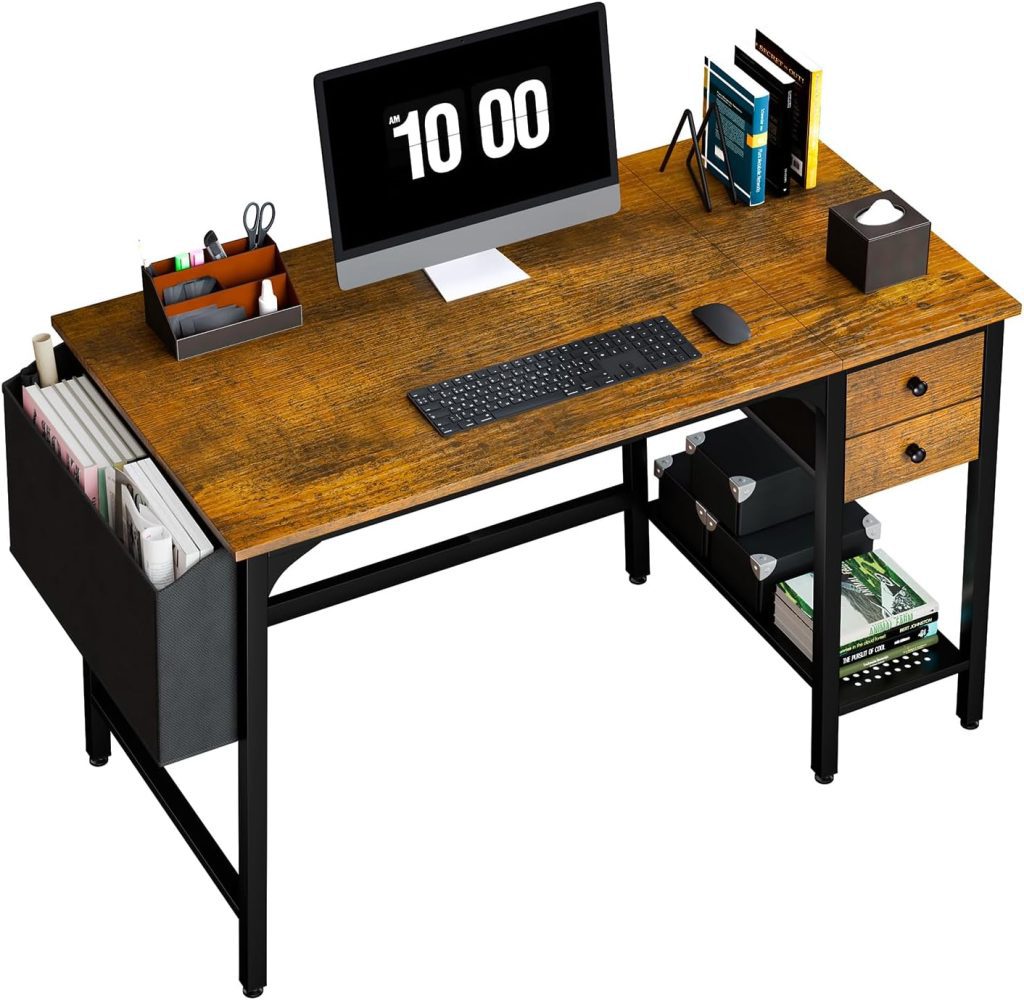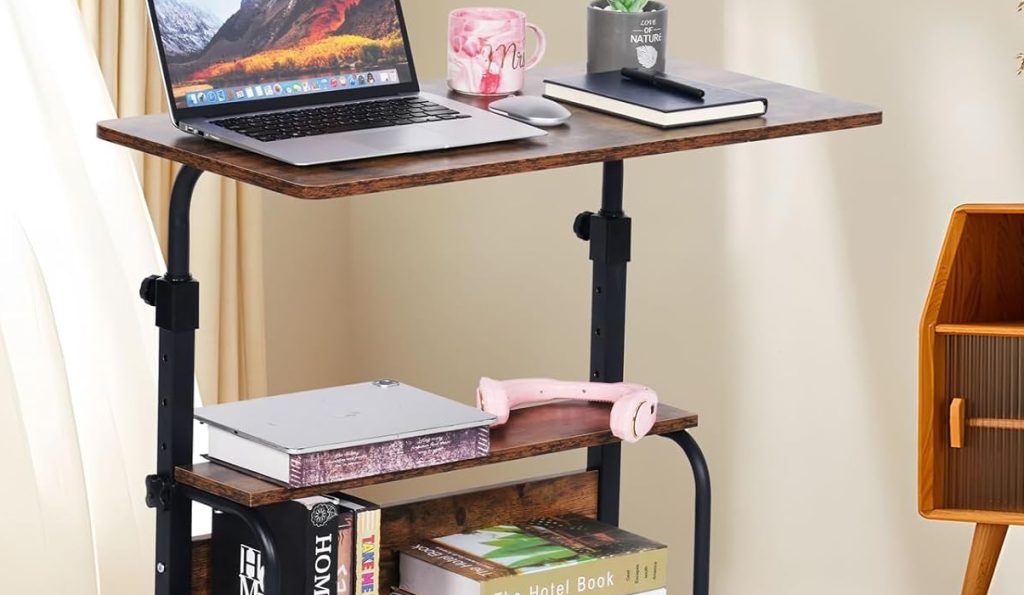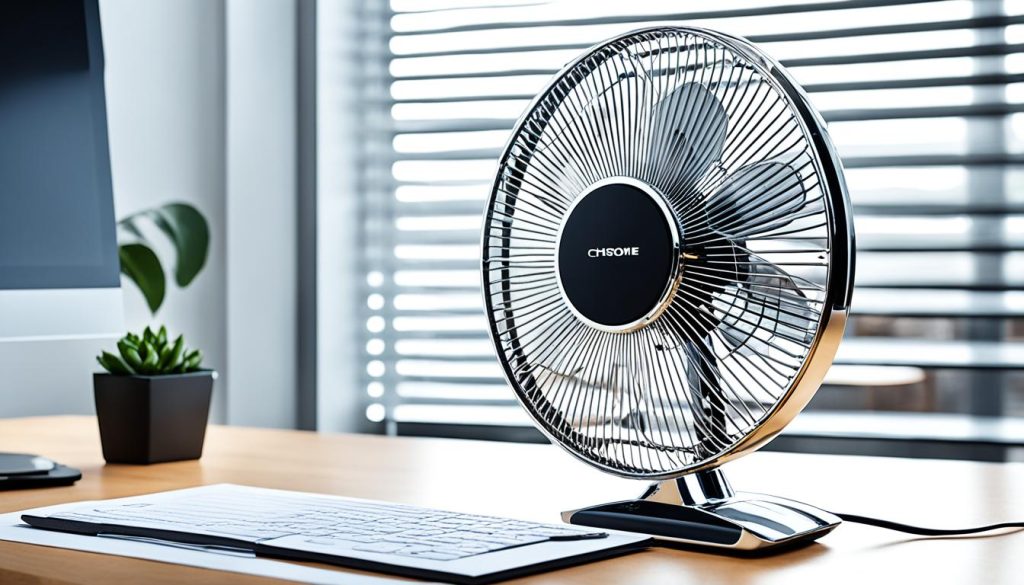As a student, you may not realize that the color of your study desk can have a significant impact on your productivity and focus. The right desk color can create an optimal learning environment that enhances your ability to concentrate and retain information. So, how do you go about choosing the best color for your study desk? Let’s explore the desk color impact on learning and discover the optimal desk color for studying.
What Color Desk is Best for Studying
- Choosing the right desk color can optimize your focus and productivity while studying.
- Different colors evoke different emotions and moods, influencing your learning experience.
- Yellow promotes positivity, green creates a sense of calm, and blue induces relaxation.
- Red provides an energy boost, and neutral colors foster focus and concentration.
- Incorporating desk colors into your study space can further enhance its visual appeal.
The Best Colors for Studying
When it comes to creating an optimal study environment, the color of your workspace plays a crucial role. Research has shown that certain colors have specific effects on our mood, energy levels, and ability to concentrate. By choosing the right colors for your study space, you can enhance your focus and productivity. Here are some of the best colors for studying:
1. Yellow for Positivity
Yellow is associated with positivity and optimism. It can help boost your motivation and create a vibrant and upbeat study atmosphere. Consider incorporating yellow accents, such as desk accessories or artwork, to infuse positivity into your workspace.
2. Green for Calm
Green is known for its calming effects. It creates a sense of tranquility and harmony, making it ideal for promoting focus during study sessions. You can add green elements to your study space through plants, wall decor, or even a green desk chair.
3. Blue for Relaxation
Blue is a color that promotes relaxation and a peaceful mindset. It has a soothing effect on the mind and can help reduce stress while studying. Consider adding blue elements to your study area, such as a blue desk lamp or a calming blue wall color.
4. Red for Energy
Red is known for its energizing properties. It can increase alertness and boost your energy levels, making it a great choice for times when you need a little extra motivation. Consider incorporating red accents into your study space, such as a red chair or desk accessories.
5. Neutrals for Focus
Neutral colors, such as beige and white, create a calm and distraction-free environment that enhances your ability to concentrate. These colors provide a clean and minimalist backdrop for your study materials. Consider using neutral-colored furniture and decor to create a serene study atmosphere.
By choosing the right colors for your study space, you can create an environment that supports your learning and helps you stay focused. Experiment with different color combinations and find what works best for you. Remember, it’s not just about aesthetics, but also the psychological impact that colors can have on our productivity and well-being.
Incorporating Desk Colors into Your Study Space
Creating a visually appealing and inspiring study space can make a significant difference in your productivity and overall learning experience. Incorporating colors into your workspace can not only add vibrancy but also enhance your mood and motivation. Here are some creative ways to incorporate desk colors into your study space:
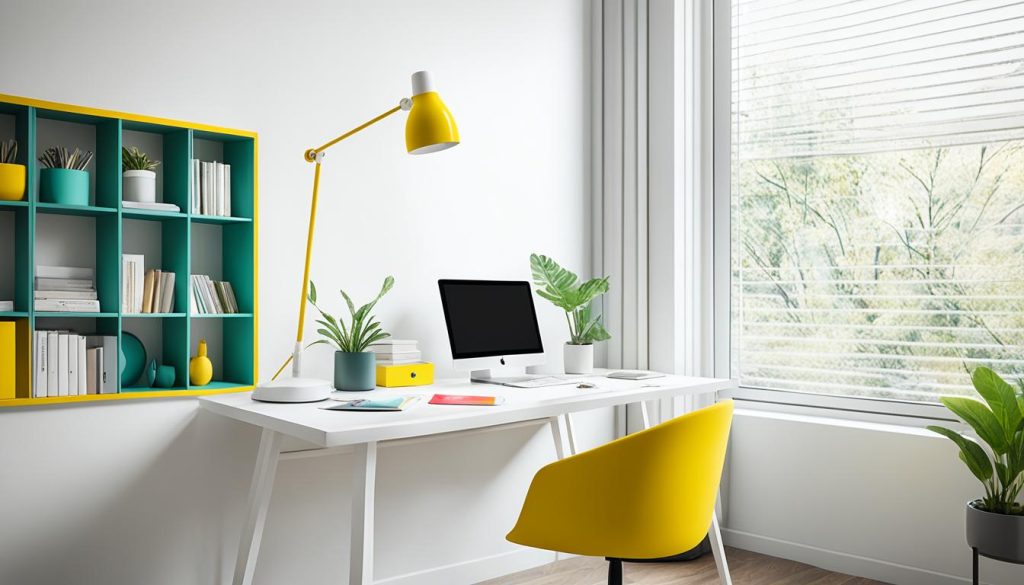

Using Colors in Office Decor
Add accents of color to your study space by incorporating colors in your office decor. Hang pictures or artwork in specific colors that inspire you and create a positive environment. Consider using office supplies like pen holders, desk organizers, or sticky notes in your favorite color.
Adding Color to Your Furniture
Add a pop of color to your study space by choosing furniture in a specific color. Opt for a statement chair or a desk in a vibrant hue that complements your personal style. This can instantly brighten up your workspace and make studying more enjoyable.
Using Color in Your Computer and Phone
Customize the color scheme of your computer or phone screen to match your study space. Choose a wallpaper or desktop theme in a color that promotes focus and concentration. This visual alignment can create a more cohesive and aesthetically pleasing environment.
Color-Coordinating Books
Arrange your books on your shelf by color to create an impactful and organized look. Group books of similar colors together to create a visually pleasing arrangement. This not only adds a touch of color but also makes it easier to locate books when you need them.
Adding Plants for Color
Bring the beauty of nature into your study space by adding plants. Greenery can add pops of natural color and create a more vibrant and refreshing environment. Choose plants with colorful leaves or flowers to further enhance the visual appeal of your study space.
By incorporating desk colors into your study space, you can create a visually stimulating and motivational environment that boosts your focus and productivity. Experiment with these ideas and find what works best for you, creating a study space that reflects your personal style and encourages effective learning.
The Psychology of Desk Colors
Color psychology is a fascinating field that explores how different colors can impact our emotions, behavior, and overall well-being. When it comes to choosing a desk color for your study space, understanding color psychology can help you create an environment that is conducive to learning and productivity.
Each color has its own associations and can evoke specific feelings and moods. Let’s take a closer look at some common desk colors and their psychological effects:
- Red: Red is a color often associated with energy, passion, and excitement. It can stimulate the mind and increase alertness, making it a suitable choice for tasks that require high levels of concentration and focus.
- Blue: Blue is known for its calming and relaxing effects on the mind. It can create a sense of tranquility, reduce stress, and enhance mental clarity, making it an excellent choice for studying and deep concentration.
- Yellow: Yellow is a vibrant and energetic color that is often linked to positivity and optimism. It can help uplift your mood, increase creativity, and promote a sense of happiness and well-being in your study environment.
- Green: Green is associated with balance, harmony, and renewal. It can create a sense of calmness and stability, making it an ideal choice for maintaining focus and promoting a peaceful study atmosphere.
By choosing a desk color that aligns with your goals and study needs, you can harness the psychological impact of colors to enhance your mental health, mood, and overall productivity. Remember that color preferences can vary from person to person, so it’s important to consider your own personal associations and reactions to different colors.
To create an engaging and visually appealing study space, you can combine different colors in your decor, furniture, and accessories. Experiment with color-coordinated accents, such as colorful art prints, desk organizers, or vibrant stationery, to add visual interest and stimulate your creativity. Incorporating plants and natural elements into your study area can also bring life and color, promoting a more refreshing and inspiring environment.
Recognizing the impact of desk colors on mental health and well-being can empower you to make intentional choices when designing your study space. Ultimately, creating a harmonious and visually pleasing environment through the strategic use of colors can contribute to enhanced focus, motivation, and overall academic success.


Conclusion
When it comes to studying, the color of your desk plays a crucial role in enhancing your productivity and focus. By carefully selecting the right desk color, such as yellow for positivity, green for calm, blue for relaxation, or neutrals for focus, you can create an optimal study environment that promotes better concentration and motivation.
In addition to choosing the right desk color, incorporating colors into your workspace through thoughtful decor, furniture, computer screens, and plants can further elevate the visual appeal and positive impact of desk colors. Adding vibrant accents like pictures, artwork, and office supplies in specific colors can instantly brighten up your study space and create an ambiance conducive to learning.
Understanding the psychology of colors is also crucial in creating an optimal study environment. Each color has its own associations and can evoke specific feelings and moods. By leveraging color psychology, you can make informed decisions that align with your study goals. For example, using the energizing effects of red or the calming effects of blue can contribute to a more efficient and enjoyable study experience.
Selecting the right desk color, incorporating colors into your workspace, and being mindful of color psychology can greatly enhance your productivity and overall learning experience. Your study environment should inspire and motivate you, and the right desk color can be a powerful tool in creating an environment that maximizes your potential.


